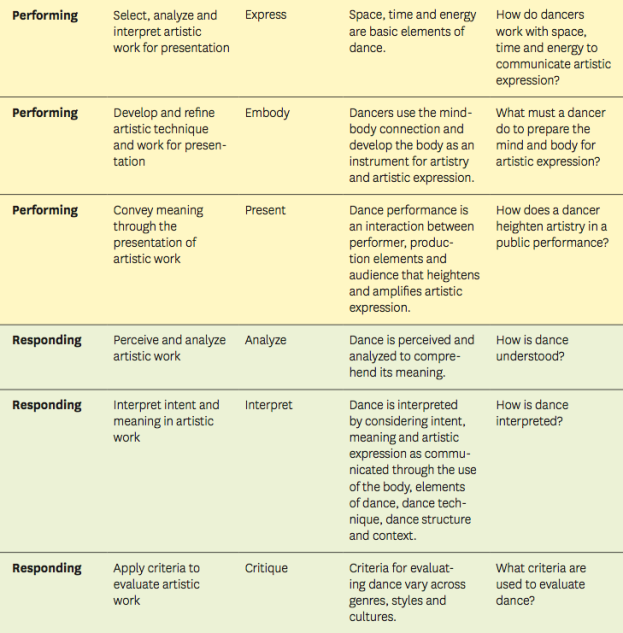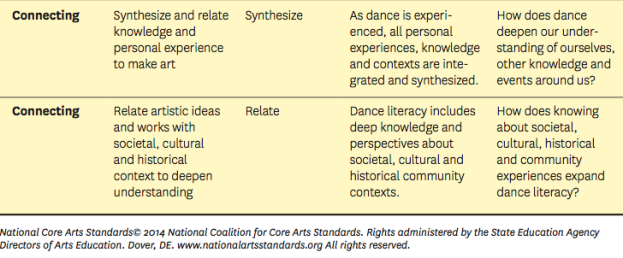DURING THE LAST YEAR, I spent a great deal of my time writing the second edition of Body, Mind & Spirit IN ACTION: a teacher’s guide to creative dance (BMS). My learning curve was steep—I had greatly underestimated the complex nature of this task. I learned that the act of writing a second edition is about improving, amending, and revisiting ideas of the first edition. Slipping into writing an entirely new book is one of the dangers of re-writing—my solution to this problem was to design the project in two stages: the first was practical; to re-write BMS because I am totally out of first edition copies and we use them at Luna Dance Institute for our professional workshops. The second stage is the creation of three supplemental booklets that dive into the areas I am interested in without resorting to adding bulk to BMS. These booklets have working titles of Dance in Early Childhood, Dance & Family Relationship, and the Rigors of Creativity. All are scheduled for completion by December 2015.
Since completing the first BMS book in 2003, there have been three sets of national standards for dance. The following excerpt addresses shifts in policy and practice that, due to timing and resources, were not fully addressed in the first edition.
NATIONAL CORE ARTS STANDARDS – Chapter 8
(excerpt from Body, Mind & Spirit IN ACTION: a teacher’s guide to creative dance, 2nd edition)
The National Art Standards documents of 1994 and 2005 focused on articulating a foundation of “what every young American should know and be able to do in the arts.” The Introduction of the initial document describes the rationale and benefits of arts education:
Because so much of a child’s education in the early years is devoted to acquiring the skills of language and mathematics, children gradually learn, unconsciously, that the “normal” way to think is linear and sequential, that the pathway to understanding moves from beginning to end, from cause to effect. In this dominant early mode, students soon learn to trust mainly those symbol systems, usually in the form of words, numbers and abstract concepts, that separate the experiencing person from what that person experiences. But the arts teach a different lesson. They… cultivate the direct experiences of the senses; they trust the unmediated flash of insight as a legitimate source of knowledge. Their goal is to connect person and experience directly, to build the bridge between verbal and nonverbal, between the strictly logical and the emotional—the better to gain an understanding of the whole.
The National Arts Standards led 49 states to adopt Visual and Performing Arts Standards of their own. While implementation of standards varied widely from state-to-state and region-to-region (most often accompanied by inequity with regard to socio-income levels and race), the basis was there that the arts were to be taught for their intrinsic value. Without veering from this original intention, a coalition of arts education experts convened to bring these foundational documents fully into the 21st century and “affirm the place of arts education in a balanced core curriculum.”
Like the 2005 Standards, the 2014 National Core Arts Standards for Dance (NCAS-D) center dance learning around general themed processes: Creating, Performing, Responding, and Connecting. Purposely chosen as verbs, these processes are designed to be experienced by all children as part of a comprehensive dance education. Similar to Common Core standards for other academic areas, NCAS-D aligns each process to Anchor Standards designed to be held constant throughout the grade levels. Unlike Common Core standards, however, the NCAS-D are clearly written and transparent in intention. There is often negativity expressed around standards because of our country’s recent history with No Child Left Behind, high stakes testing and now the opacity of Common Core. At the same time, there appears to be general agreement that the education system has not been working and that children need to be better prepared for the 21st century. There is also increasing concern, particularly among educators and innovative business leaders that students are graduating from high school and college deficient in creativity and critical thinking skills. Never has arts education been more needed than today.
Dance educator members of the National Dance Education Organization (NDEO) led the way in the National Core Arts Standards development in all arts disciplines. The NDEO website has multiple resources for the dance educator to become familiar with the NASC-D. There you can read, study, interact and play with the standards. You can see examples of how to assess them. The Creating, Performing, Responding, and Connecting processes are aligned with Anchor Standards and each anchor standard is supported with a Process Component, an Enduring Understanding and Essential Question. This framework aligns with contemporary thought about teaching and learning; that is, that curriculum should be about big ideas, with lots of room to customize, detail, and make meaning from the vast content that exists within any big idea. To that end, though written linearly, the writers of NACS-D acknowledge that in dance, these standards tend to occur simultaneously.
It is easy to see that the NCAS-D are not prescriptive; rather, they invite the dance teacher to create his/her own curriculum that relates to the fundamental processes of creating, performing, responding and connecting through dance. They were intentionally written broadly to allow for local differences and flexibility in instruction. While some might quibble with certain language or examples provided in the NCAS-D, it might be useful to remember that this language resulted from a large committee of volunteer experts and consensus does not always sit perfectly with the sensibilities of each individual. Try not to get bogged down by the details of the age-level examples; instead, refer to the larger concepts and check-in regularly with the NCAS-D to assure that you are not forgetting an aspect of the full ranges of the discipline, or to help you describe what it is that is happening in the dance studio classroom. Many highly qualified dance teaching artists use the NCAS-D as a launching off point and teach well beyond the examples provided to elevate expectations of the field. The writing committee does an exemplary job of checking in with master teachers across the nation for feedback on the viability of NCAS-D as a living, feasible resource.
The process of establishing standards— whether on a national, state, or district level—provides opportunities for communities to partake in conversations about values: specifically, what knowledge is important in a particular discipline. As states and districts create their own version of arts content standards, the values of the various local communities are revealed. Artists, teachers, administrators, curriculum designers, parents, and students can participate in the process of adopting local standards to ensure that the standards adopted reflect their values for dance education.




